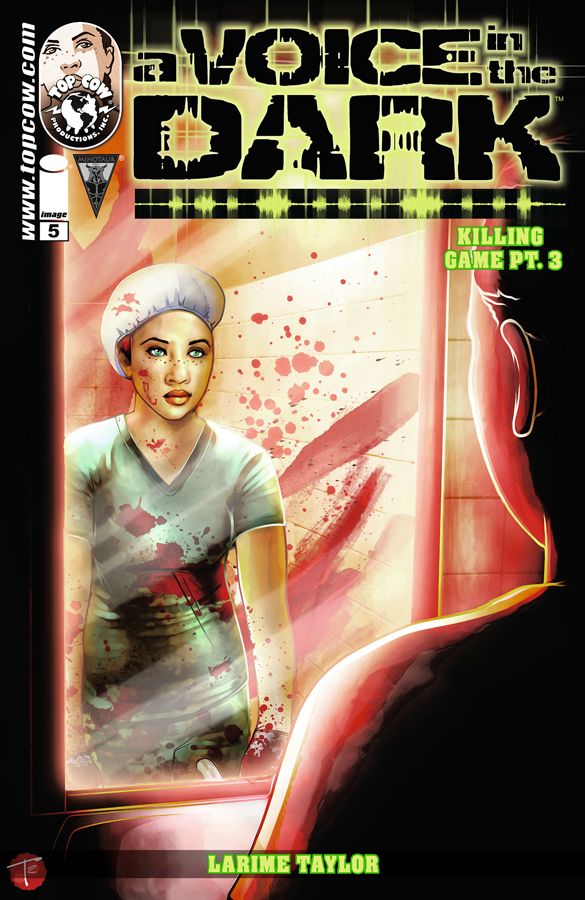Larime Taylor begins "A Voice in the Dark" #5 with a one-page glimpse into the future, indicating that Zoey has killed again. Zoey blames herself for the two deaths that resulted from her radio show, but under both under ethics and the law, she's in the clear there. Unlike that "kill," this future murder seems to be real, with the same hands-on, violent methods as her first kill. Zoey's voiceover thoughts are disturbing, alternating between a thoughtful calm and residual adrenaline, but she's still sympathetic. Taylor manages the balance well, keeping the reader close to his main character but not toning down her frightening moodiness and lack of remorse.
After this opener, "A Voice in the Dark" #5 goes into flashback mode, and the format switches to a series of talking heads. The conversation between Zoey and Ash is an information dump about the consequences of last issue's sorority party confrontation. The revelations are juicy, but the plotting feels a little too results-driven. Taylor seems to be laying the ground for Zoey's motivation for the next kill. Similarly, the discussion between Uncle Zeke and Zoey has excellent details, but it occurs in order to build suspense in the subplot.
It's a subjective quibble, but the sociology or psychology of the interactions feels off at times. The most obvious example the incredibly nasty character of Mandy. It's not that sorority girls can't be as awful as their stereotype, but the expression of the peer dynamics is off. To be specific, women don't usually discuss their social machinations out loud with their boyfriends. It's the wrong target audience, and usually girls take care to look good in front of authority. If women discuss punishing outsiders or social enemies it at all, they plot with their direct pack followers, "Mean Girls"-style. The boyfriend is a doormat and really only functions as a sounding board for Mandy, and Taylor even acknowledges this by cutting off his head with the panel compositions. Mandy is a too simplistic, easy-to-hate personification of all things wrong with sorority life. She's being set up as a throwaway antagonist and her days are likely numbered, although Taylor teases the reader with the open question of who Zoey has killed.
However, despite Mandy's shallowness in personality, it's a good sign of ambition and inclusiveness that Taylor is writing so many female characters. His artwork has an admirable array of body types and facial features, and his body language is strong. The serial killer subplot is based on standard slasher chills and thrills, but Taylor is effective in heightening the suspense by the lack of color and limiting the reader's sightlines.
"A Voice in the Dark" #5 maintains the series' strong plotting and suspense, although the characterization suffers a little in service of the plot.

